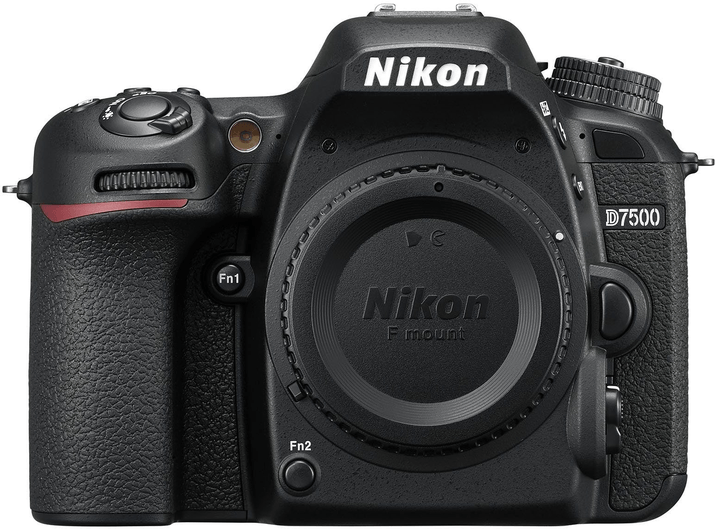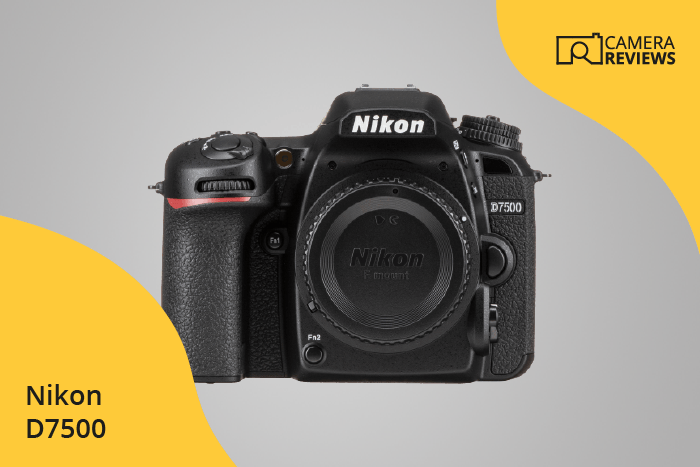Nikon D7500 Specs and Scores

The Nikon D7500 earns a score of 70/100 due to its solid general specifications. Announced on April 12, 2017, and released the same year, this DSLR camera hit the market with a launch price of $1250. The camera measures 136 x 104 x 73mm and weighs 720g or 1.59lbs.
These specifications make the D7500 a competitive option in today’s market. Its size and weight provide a balance of portability and performance, allowing users to capture high-quality images without being weighed down.
Nikon D7500 Overview and Optics
The optics of the Nikon D7500 receive a score of 68/100. With 20.9 megapixels, an 8 fps shooting speed, and a CMOS sensor, this camera boasts competitive specifications in today’s market. The Expeed 5 processor and a DXOMARK sensor score of 86 further enhance its performance.
The Nikon D7500 has an APS-C sensor size, a Nikon F DX lens mount, and a 3:2 aspect ratio. However, it lacks image stabilization, which might be a drawback for some users. Despite this, the camera’s specifications remain strong when compared to other models in the market.
The Nikon D7500’s optics offer solid performance and quality, making it a reliable choice for photographers seeking a capable and efficient camera.
Nikon D7500 Video Performance
The Nikon D7500 receives a video score of 70 out of 100, showing decent performance in this area. The camera offers 4K video resolution with a maximum dimension of 3840 x 2160, providing crisp and detailed footage. Additionally, it can capture video at a frame rate of 30fps, ensuring smooth motion in recorded clips.
In the current market, the Nikon D7500’s video capabilities are competitive but not class-leading. Many newer cameras offer higher frame rates and advanced video features. However, the D7500 does include built-in time-lapse functionality, which adds a creative option for users wanting to capture the passage of time in their video projects.
The Nikon D7500’s video performance is respectable, but not groundbreaking. For those who prioritize video capabilities, there may be more suitable options available. However, the camera’s video features are sufficient for casual users and those wanting to experiment with time-lapse photography.
Nikon D7500 Features and Benefits
The Nikon D7500 has a feature score of 83 out of 100, showcasing its impressive capabilities. With a 3.2-inch screen size and a resolution of 922,000 dots, this camera offers a clear and vibrant display. The touchscreen functionality and flip screen add versatility and ease of use to the user experience.
The D7500 is not equipped with GPS, but it does include Wi-Fi and Bluetooth capabilities, allowing for easy sharing and transfer of images. These features make the D7500 a strong contender in the current market, as connectivity is highly valued by photographers.
Taking the specifications into account, the Nikon D7500 proves to be a reliable and feature-packed camera suitable for a variety of photography needs.
Nikon D7500 Storage and Battery
The Nikon D7500 receives a storage and battery score of 43/100. It has one memory card slot, which accepts SD, SDHC, and SDXC cards. In today’s market, having a single memory card slot may not be enough for some professional photographers who require backup storage options.
The D7500’s battery life lasts for 950 shots, utilizing the EN-EL15a battery type. This battery life is decent for a DSLR camera, but it lacks USB charging capabilities. Consequently, users must carry spare batteries or a charger for extended shooting sessions.
Taking these factors into account, the Nikon D7500’s storage and battery capabilities are average compared to other cameras in its class.
Nikon D7500 Alternatives
Do you want to know how the Nikon D7500 compares to its competitors? Have a look at the most popular comparisons for this camera below:
- Canon EOS 90D vs Nikon D7500
- Nikon D5600 vs D7500
- Nikon D750 vs D7500
- Nikon D7500 vs Z50
- Canon EOS 1Ds Mark III vs Nikon D7500
- Nikon D7500 vs Z5
Nikon D7500 FAQ
Does the Nikon D7500 Have Built-in Image Stabilization?
The Nikon D7500 does not have built-in image stabilization. However, it supports lenses with Nikon’s Vibration Reduction (VR) technology for stabilized shooting.
Does the Nikon D7500 Support 4K Video Recording?
Yes, the Nikon D7500 supports 4K video recording at 30fps, providing high-quality video footage for various purposes such as filmmaking, vlogging, and more.
What Size Sensor Does The Nikon D7500 Have?
The Nikon D7500 has an APS-C sized sensor (23.5 x 15.7mm) which offers excellent image quality and performance in various shooting conditions.
Does the Nikon D7500 Have a Dual Memory Card Slot?
No, the Nikon D7500 features a single SD memory card slot. This may be a limitation for some users requiring backup or overflow storage options.
Does the Nikon D7500 Have a Touch Screen?
Yes, the Nikon D7500 features a 3.2-inch tilting touch screen, providing easy access to settings and facilitating quick focus adjustments during live view shooting.
Does the Nikon D7500 Have Wi-Fi and Bluetooth?
Yes, the Nikon D7500 has both Wi-Fi and Bluetooth capabilities, allowing for easy image transfer, remote control, and seamless connection with compatible devices.
Does the Nikon D7500 Have GPS?
No, the Nikon D7500 does not have built-in GPS functionality. However, you can use the SnapBridge app to geotag your images with location data from a connected smartphone.
Is the Nikon D7500 Weather Sealed?
Yes, the Nikon D7500 is weather-sealed, making it suitable for outdoor shooting in various weather conditions, providing protection against dust, moisture, and light rain.
Does the Nikon D7500 Have a Built-in Flash?
Yes, the Nikon D7500 has a built-in flash, providing additional lighting options in low-light situations or for creative lighting effects.

